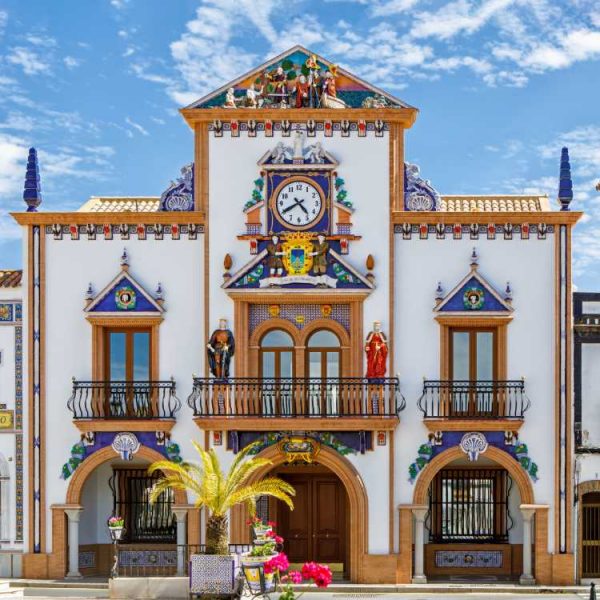Town Hall

The facade of the Town Hall building dates back to 2018. It is a compilation of allegories about the Discovery of America and elements specific to the municipality.
From bottom to top, within the arcade of arches, several cartouches can be seen featuring representative places of the locality.
Below the central balcony, an oval shows the patron saint of the town, Saint George Martyr. The representation of chains above the entrance recalls the royal stay at the town hall by Their Majesties the Kings of Spain in 1981 and 1992 respectively. The various corbels supporting the balconies and the roof overhang alternately feature anchors and hearts derived from the border of the city’s heraldic shield, which, in turn, takes them from the coat of arms granted by Emperor Charles to the Pinzón family. Inside the balcony, the Catholic Monarchs alongside their coats of arms above the windows. On the left, Aragon, next to Ferdinand II holding in his hand the Royal Provision or Pragmatic of May 23, 1492 (sanction imposed on certain residents of the town by the Catholic Monarchs, by which the delivery of two caravels fully “equipped and ready” for Columbus’s service was ordered), and on the right, Castile alongside Queen Isabella I.
Above the side balconies, in two tondos, the Pinzón Brothers, Martín Alonso and Vicente Yáñez.
In the upper body, resembling tenantes, two sailors hold the coat of arms of Palos de la Frontera on the phylactery with the legend “Cradle of Discovery.” Above the clock, held by two angels among fishing nets, is the image of the canonical Patroness of the city, the Virgin of Miracles, Santa María de la Rábida, the image before which sailors prayed during the night of August 2 to 3 before the departure of the caravels. This representation of the Virgin among rigging alludes to the legend of the apparition of Our Lady, described in an ancient manuscript about the convent of La Rábida by Fray Felipe de Santiago: “It is worth knowing that around the year 1472, with this convent in the possession of the Franciscan Friars, in the month of December of said year … Friar Juan Bautista Pedroso went to celebrate the Mass for the day of the Immaculate Conception, for the people who were working with the fishing boats. And that night there were different opinions about whether to fish on the day of the Immaculate, to which the Friar said that they should at least cast a net so they could eat, and he would bring an offering. And they had the blessed catch of the Queen and King of heaven and earth, Jesus and Mary.”
“And it was in this way: by casting the first net, they pulled out the image of the Sovereign Queen with the half-body of the Child … They cast another one and pulled out what was missing of the Child. And taking it, the friar applied it to the other half, and without any delay, it remained united. (…)”
